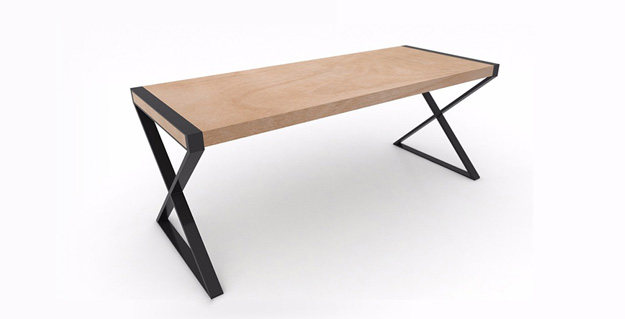Why Industrial furniture?
The industrial style began with the artists settling abandoned factories, construction warehouses and warehouses in the 50s of the 20th century. In the United States. Bohema has adapted the creative interiors of lofts using the furniture and finishing elements found on the site. The love of minimalist interiors, open spaces and related industrial furniture has spread to other groups of society and quickly moved to Europe to make it from the 90s of the 20th century. Also in Poland. It is increasingly possible to meet with the industrial-style interiors of restaurants, cafés, offices, shops and houses.


What we love about industrial furniture
Industrial style stands in opposition to the network furniture produced in bulk from plastics in China. The individuality of each furniture is marked by the selection of materials and the manual work of experienced locksmen and carpenters. The essence of industrial furniture is the combination of beautiful, raw materials such as: natural solid wood, aluminium (e.g. Ulam collection) and steel (e.g. Owen collection). Minimalistic collections should be characterized by the highest quality of workmanship, simplicity of design and comfort of use. Industrial furniture, also called loft, is a great fit for open, light – filled spaces and minimalist spaces where you can see their natural beauty and refined details.
Inward or outward
Initially, industrial furniture was used to finish the lofts, with the passage of time their application greatly expanded. External collections of furniture designed for terraces and gardens have emerged. The advantages of such applications are very high. In addition to aesthetics and unique design, aluminum constructions and properly prepared, solid wood are resistant to weather conditions and time lapse. Inspired by nature, the same fits perfectly, and in the surroundings of greenery you can fully admire their noble beauty.


Ecology and indigenous production
Industrial furniture is not only a love of light and space, but also the environment and the beauty of nature. Manufactories that create responsibly and passionately use for the creation of ecological, recyclable materials (aluminum) and technologies (powder coating, wood oil). Thus, not only the raw, natural piece of furniture is obtained, but also the entire production takes place in harmony with nature, from which the patterns draw. In addition, industrial furniture can be fully manufactured in Polish manufactories from indigenous raw materials. selected, Polish wood of the highest quality gives extensive possibilities of choice of grain and properties: oak, ash, pine or acacia, as well as the steel and aluminum profiles purchased in the domestic steel. These materials combined with the work of experienced lockscarers and joiners create the highest quality.

